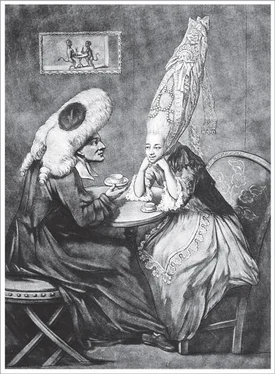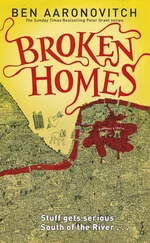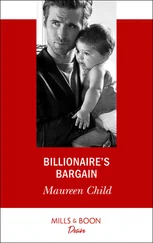Bill Bryson - At Home
Здесь есть возможность читать онлайн «Bill Bryson - At Home» весь текст электронной книги совершенно бесплатно (целиком полную версию без сокращений). В некоторых случаях можно слушать аудио, скачать через торрент в формате fb2 и присутствует краткое содержание. Жанр: Старинная литература, на английском языке. Описание произведения, (предисловие) а так же отзывы посетителей доступны на портале библиотеки ЛибКат.
- Название:At Home
- Автор:
- Жанр:
- Год:неизвестен
- ISBN:нет данных
- Рейтинг книги:4 / 5. Голосов: 1
-
Избранное:Добавить в избранное
- Отзывы:
-
Ваша оценка:
- 80
- 1
- 2
- 3
- 4
- 5
At Home: краткое содержание, описание и аннотация
Предлагаем к чтению аннотацию, описание, краткое содержание или предисловие (зависит от того, что написал сам автор книги «At Home»). Если вы не нашли необходимую информацию о книге — напишите в комментариях, мы постараемся отыскать её.
At Home — читать онлайн бесплатно полную книгу (весь текст) целиком
Ниже представлен текст книги, разбитый по страницам. Система сохранения места последней прочитанной страницы, позволяет с удобством читать онлайн бесплатно книгу «At Home», без необходимости каждый раз заново искать на чём Вы остановились. Поставьте закладку, и сможете в любой момент перейти на страницу, на которой закончили чтение.
Интервал:
Закладка:
Bread seems to have been particularly a target. In his popular novel The Expedition of Humphry Clinker (1771), Smollett characterized London bread as a poisonous compound of “chalk, alum and bone-ashes, insipid to the taste and destructive to the constitution,” but such charges were in fact already a commonplace by then and probably had been for a very long time, as evidenced by the line in “Jack and the Beanstalk”: “I’ll crush his bones to make my bread.” The earliest formal allegation of widespread bread adulteration yet found came in a book called Poison Detected: Or Frightful Truths , written anonymously in 1757 by “My Friend, a Physician,” who revealed on “very credible authority” that “sacks of old bones are not infrequently used by some of the Bakers” and that “the charnel houses of the dead, are raked to add filthiness to the food of the living.” Almost at the same time another, very similar book came out: The Nature of Bread, Honestly and Dishonestly Made , by Joseph Manning, M.D., who reported that it was common for bakers to add bean meal, chalk, white lead, slaked lime, and bone ash to every loaf they made.
These assertions are routinely reported as fact, even though it was demonstrated pretty conclusively over seventy years ago by Frederick A. Filby, in his classic work Food Adulteration (1934), that the claims could not possibly be true. Filby took the interesting and obvious step of baking loaves of bread using the accused adulterants in the manner and proportions described. In every case but one the bread was either as hard as concrete or failed to set at all, and nearly all the loaves smelled or tasted disgusting. Several needed more baking time than conventional loaves and so were actually more expensive to produce. Not one of the adulterated loaves was edible.
The fact of the matter is that bread is sensitive stuff: if you put foreign products into it in almost any quantity, people will notice. But then this could be said about most foodstuffs. It is hard to believe that anyone could drink a cup of tea and not notice that it was 50 percent iron filings. Although some adulteration doubtless did happen, particularly when it enhanced color or lent an appearance of freshness, most cases of claimed adulteration are likely to be either exceptional or untrue, and this is certainly the case with all the things said to be put into bread (with the single notable exception of alum, about which more in a moment).
It is hard to overemphasize just how important bread was to the English diet through the nineteenth century. For many people bread wasn’t just an important accompaniment to a meal, it was the meal. Up to 80 percent of all household expenditure, according to the bread historian Christian Petersen, was spent on food, and up to 80 percent of that went on bread. Even middle-class people spent as much as two-thirds of their income on food (compared with about one quarter today), of which a fairly high and sensitive portion was bread. For a poorer family, nearly every history tells us, the daily diet was likely to consist of a few ounces of tea and sugar, some vegetables, a slice or two of cheese, and just occasionally a very little meat. All the rest was bread.
Because bread was so important, the laws governing its purity were strict and the punishments severe. A baker who cheated his customers could be fined £10 per loaf sold, or made to do a month’s hard labor in prison. For a time, transportation to Australia was seriously considered for malfeasant bakers. This was a matter of real concern for bakers because every loaf of bread loses weight in baking through evaporation, so it is easy to blunder accidentally. For that reason, bakers sometimes provided a little extra—the famous baker’s dozen.
Alum, however, is another matter. Alum is a chemical compound—technically a double sulfate—used as a fixative for dyes. (The formal term is a mordant.) It was also used as a clarifying agent in all kinds of industrial processes and for dressing leather. It provides excellent whitening for flour, but that isn’t necessarily a bad thing. For a start, a very little alum goes a long way. Just three or four spoonfuls can whiten a 280-pound sack of flour, and such a dilute amount would harm no one. In fact, alum is added to foods and medicines even now. It is a regular constituent in baking powder and vaccines, and sometimes it is added to drinking water because of its clarifying properties. It actually made inferior grades of flour—flour that was perfectly good nutritionally but just not very attractive—acceptable to the masses and therefore allowed bakers to make more efficient use of their wheat. It was also added to flour for perfectly legitimate reasons as a drying agent.
It wasn’t always that foreign substances were introduced with the intention of bulking things up. Sometimes they just fell in. A parliamentary investigation of bakeries in 1862 found many of them filled “with masses of cobwebs, weighed down with flour dust that had accumulated upon them, and hanging in strips” ready to drop into any passing pot or tray. Insects and vermin scurried along walls and countertops. A sample of ice cream sold in London in 1881 was found to contain human hair, cat hair, insects, cotton fibers, and several other insalubrious constituents, but this probably reflected a lack of hygiene rather than the fraudulent addition of bulking agents. In the same period, a London confectioner was fined “for colouring his sweets yellow with surplus pigment left over from painting his cart.” However, the very fact that these matters attracted the attention of newspapers indicates they were exceptional events rather than routine ones.
Humphry Clinker , a sprawling novel written in the form of a series of letters, paints such a vivid picture of life in eighteenth-century England that it is much quoted even now and almost certainly therefore has a lot to answer for. In one of its more colorful passages Smollett describes how milk was carried through the streets of London in open pails, into which plopped “spittle, snot and tobacco-quids from foot passengers, over-flowings from mud-carts, spatterings from coach-wheels, dirt and trash chucked into it by roguish boys for the joke’s-sake, the spewings of infants … and, finally, the vermin that drops from the rags of the nasty drab that vends this precious mixture.” What is easily overlooked is that the book was intended as satire, not as documentary. Smollett wasn’t even in England when he wrote it; he was slowly dying in Italy. (He died three months after its publication.)
All this isn’t to say that there wasn’t bad food about. There most certainly was. Infected and rotten meat was a particular problem. The filth of London’s Smithfield Market, the city’s principal meat exchange, was celebrated. One witness to a parliamentary investigation of 1828 said he saw “a cow’s carcass that was so rancid, the fat was no more than dripping yellow slime.” Animals driven in on the hoof from distant parts often arrived exhausted and sick, and didn’t get any better while there. Sheep reportedly were sometimes skinned while still alive. Many animals were covered with sores. Smithfield vendors, in fact, had a private name for bad meat: cag-mag , an abbreviation of two slang words, meaning “cheap crap.”
Even when the producers’ intentions were pure, the food itself wasn’t always. Getting food to distant markets in an edible condition was a constant challenge. People dreamed of being able to eat foods from far away or out of season. In January 1859, much of America followed eagerly as a ship laden with three hundred thousand juicy oranges raced under full sail from Puerto Rico to New England to show that it could be done. By the time it arrived, however, more than two-thirds of the cargo had rotted to a fragrant mush. Producers in more distant lands could not hope to achieve even that much. Argentinians raised massive herds of cattle on their endless and accommodating pampas, but they had no way to ship the meat. Most of their cows were therefore boiled down for their bones and tallow, and the meat was simply wasted. Seeking ways to help them, the German chemist Justus von Liebig devised a formula for a meat extract, which came to be known as Oxo, but clearly that could never make more than a marginal difference.
Читать дальшеИнтервал:
Закладка:
Похожие книги на «At Home»
Представляем Вашему вниманию похожие книги на «At Home» списком для выбора. Мы отобрали схожую по названию и смыслу литературу в надежде предоставить читателям больше вариантов отыскать новые, интересные, ещё непрочитанные произведения.
Обсуждение, отзывы о книге «At Home» и просто собственные мнения читателей. Оставьте ваши комментарии, напишите, что Вы думаете о произведении, его смысле или главных героях. Укажите что конкретно понравилось, а что нет, и почему Вы так считаете.












